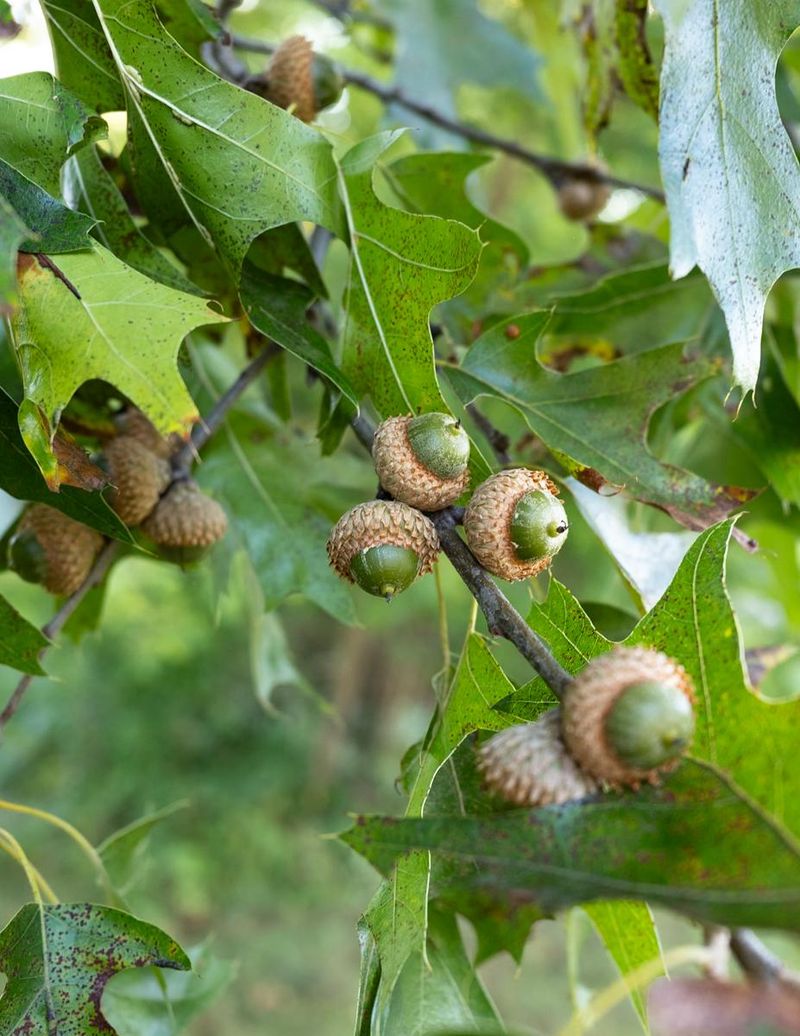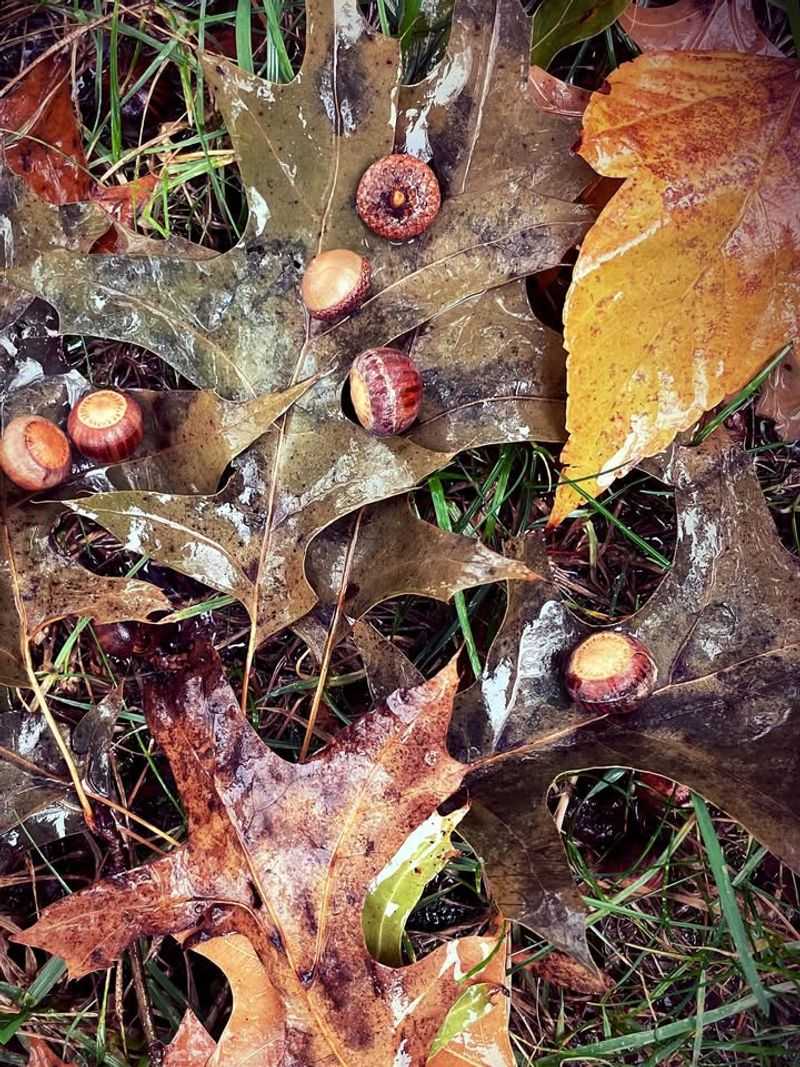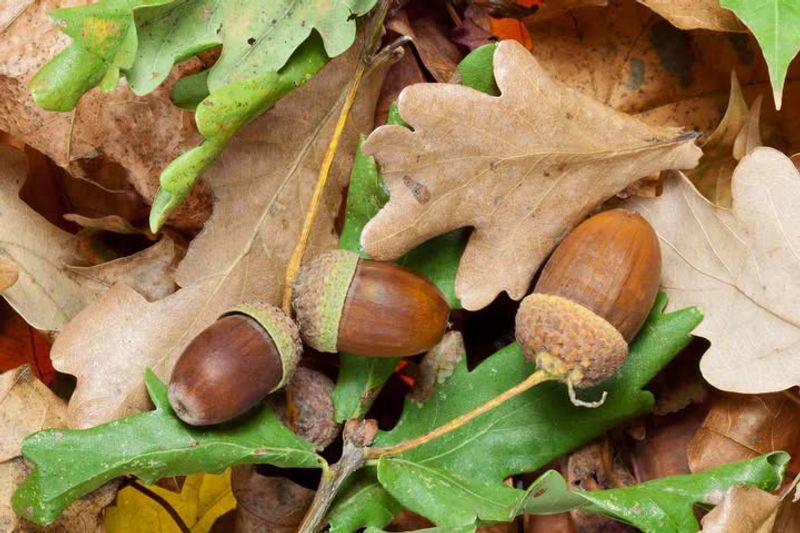Acorns pop up across Ohio this year, and folks scratch their heads in surprise. One moment yards look tidy, the next they hold piles of tiny brown clues from the treetops.
Oak branches act like busy factories, and the sudden flood of nuts raises questions about what nature signals. Some say an acorn surge hints at bold wildlife activity, others claim it points to shifting seasons or tree defense tactics.
Acorns seldom steal the spotlight, yet this season turns them into headline makers, prompting fresh attention to the state’s backyard ecosystems.
1. Mast Year Phenomenon
Oak trees have a clever survival strategy called masting, where they produce massive amounts of acorns all at once every few years. Instead of making the same number each year, they save up energy and explode with production.
Scientists believe this overwhelms animals that eat acorns, ensuring some nuts survive to grow into new trees. When mast years happen, you’ll see acorns absolutely everywhere, covering lawns and forests alike.
Ohio experienced perfect conditions this year for a major mast event across its oak population.
2. Perfect Spring Weather Conditions
Spring weather plays a huge role in acorn production, and Ohio had ideal conditions this past spring. Warm temperatures arrived right when oak trees were flowering, which helped pollination happen smoothly.
Rain came at just the right times too, giving trees the moisture they needed without washing away pollen. When everything aligns perfectly during those critical spring weeks, oak trees can fertilize way more flowers than usual.
Those fertilized flowers eventually became the acorns you’re tripping over now.
3. Reduced Competition From Last Year
Last year, many Ohio oak trees produced fewer acorns than normal, which might seem like bad news. Actually, this gave trees a chance to rest and store up nutrients in their roots and branches.
Think of it like taking a break before a big race. Trees that didn’t waste energy on making tons of acorns could focus on growing stronger instead.
When this year rolled around, they had plenty of stored energy ready to dump into creating record numbers of acorns.
4. Abundant Rainfall This Summer
Summer rainfall was generous across Ohio this year, and that made a big difference for developing acorns. Young acorns need consistent moisture throughout summer to grow from tiny buds into full-sized nuts.
Drought can cause acorns to shrivel up and drop early, but steady rain keeps them plump and healthy. Ohio’s weather patterns delivered regular showers without devastating storms that could knock acorns down prematurely.
Well-watered trees produced more acorns that actually made it to maturity this fall.
5. Healthy Oak Tree Population
Ohio is home to millions of oak trees spread across forests, parks, and neighborhoods. When you have such a large, healthy population of oaks, even normal production levels create noticeable acorn coverage.
During a mast year, that population multiplies the effect dramatically. Each tree might drop thousands of acorns, and when you multiply that by countless trees, the numbers become staggering.
Ohio’s strong oak population means more acorn-producing trees working together to create this year’s bumper crop across the entire state.
6. Climate Patterns Favoring Growth
Longer-term climate patterns have created favorable growing conditions for Ohio’s oak trees over recent years. Milder winters mean trees experience less stress and damage, letting them put more energy into reproduction.
Extended growing seasons give trees extra time to photosynthesize and build up resources. Temperature swings haven’t been as extreme as in some past years, which helps trees maintain steady growth.
All these climate factors combined have put Ohio’s oaks in prime condition for producing exceptional acorn crops when mast years arrive.
7. Fewer Late Frost Events
Late spring frosts can be devastating to acorn production because they destroy the delicate flowers that would become acorns. One cold snap at the wrong time can wipe out an entire year’s potential crop.
Fortunately, Ohio dodged those damaging late frosts this spring. Temperatures stayed warm enough to protect the vulnerable flowers during their critical development period.
Without frost destroying off those flowers, nearly all of them survived to be pollinated and grow into the acorns blanketing yards and streets throughout the state this autumn.
8. Synchronized Oak Species Timing
Ohio has multiple oak species, including red oak, white oak, and pin oak, each with slightly different schedules. When their production cycles sync up, the acorn explosion becomes even more impressive.
Different species flowering at similar times can actually help cross-pollination in some cases. Even when they don’t cross-pollinate, having multiple species all producing heavy crops simultaneously creates that overwhelming abundance you’re witnessing.
This year, timing aligned across species to create a perfect storm of acorn production statewide.
9. Strong Pollination Success Rate
Pollination success depends on wind carrying pollen from male flowers to female flowers at just the right moment. Calm spring days with gentle breezes create ideal conditions for this process.
Too much wind scatters pollen uselessly, while too little means it doesn’t travel far enough. Ohio experienced that sweet spot this spring where conditions were just right for maximum pollination efficiency.
Higher pollination rates directly translate to more fertilized flowers, which means more acorns dropping on your lawn, driveway, and everywhere else this fall season.










